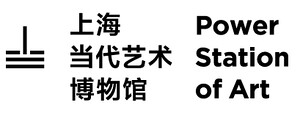The First Generation of Chinese Architects from the University of Pennsylvania
August 18–October 14, 2018
678 Miaojiang Road
200011 Shanghai
China
Hours: Tuesday–Sunday 11am–7pm
T +86 21 3110 8550
media@powerstationofart.com
Power Station of Art is honored to host The Rise of Modernity: The First Generation of Chinese Architects from the University of Pennsylvania, in conjunction with School of Architecture, Southeast University and Architectural Society of Shanghai. It is the first presentation of historical archives, which systematically aim at the rise and development of modern Chinese architecture by a contemporary art institution in China. By focusing on each specific case study, the exhibition revisits historical prosperities of Shanghai as a modern metropolis.
Emerging of industrialization and urbanization took place in Shanghai in early 20th century, played a leading role of ports forcibly opened under Treaties with Western nations. It began to flourish simultaneously in multiple aspects such as economy and culture. The urbanization and gentrification triggered citizens’ dual need of architecture’s practicality and aesthetics. Meanwhile, architecture was brought to China as an academic subject, which caused a emergence of considerable architectural design talents. It was also a historical turning point of which China’s “first-generation architects” who studied at University of Pennsylvania returned, infusing fresh blood into this profession of their homeland and become the backbone of modern architectural designing and urban construction. Amongst trained architects of roughly 20 prominent founders in particular, of modern Chinese architecture, were Zhu Bin, Fan Wenzhao, Zhao Shen, Yang Tingbao, Chen Zhi, Liang Sicheng, Lin Huiyin, and Tong Jun.
The exhibition contains two body of works. Starting with Beaux-Arts teaching method at University of Pennsylvania, the first section will concentrate on the overseas experience and home achievements of the “first-generation architects.” Tour continues with their contributions in architectural practices, including educational system, academic journals, and urban planning. Adopting a purely local perspective, the second chapter will follow one of major task which PSA has been pursuing of research-based studies on Architecture and Modernity that unravels around Shanghai’s complex of being a modern metropolis. It will, through each single-case to analyse local-public and residential projects: the Shanghai Theater, the Majestic Theater, the Dai Sun Company Building, and the Georgia Apartments etc. It allows us to explore the city’s urban history and its architecture. By doing so, this study reveals the intricate interactions between individual, city and time. It is noteworthy that this chapter will present two newly-produced short documentaries, which spanning the times of past and present in Shanghai edifices in oral narrated history. It is not only a simple reflection of “Thoughts and Legacies” of the “first-generation architects,” but also indicates the process in a casual logic of then-and-now, to expect a new urban studies thereafter.
On the same day of the opening ceremony and the closing ceremony, PSA will hold two thematic seminars: “U Penn and China’s Modern Architecture” (August 18) and “Beaux-Arts and Modern Architecture” (October 13) that invites scholars of Shanghai and from overseas as well, to discuss some major questions raised by the exhibition. During the exhibition, a series of sideline programs will also be conducted throughout the city, which provides an opportunity for the public to visit some historical buildings in Shanghai, both familiar and unfamiliar; urging the bystanders to recall our collective memory of the city.
Chief Curator: Tong Ming
PSA “Architecture & City” Exhibitions and Researches
In 2013, PSA initiated its thematic program—“Architecture & City” Exhibitions and Researches, providing themed exhibitions, holding seminars, and supporting publishing plans every year. Through architecture as a comprehensive social device, PSA is hoping to tell stories between cities and their inhabitants, as well as explore the intricate relations between individual, space and power mechanism. Until now, the museum has held exhibitions in this field including Piece by Piece: Renzo Piano Building Workshop (2015), Mobile Architecture: Yona Friedman (2015), Bernard Tschumi – Architecture: Concept & Notation (2016), Ordinary Metropolis – Shanghai: A Model of Urbanism (2016), Balkrishna Doshi: Celebrating Habitat – The Real, the Virtual & the Imaginary (2017), and Superstudio 50 (2017).

